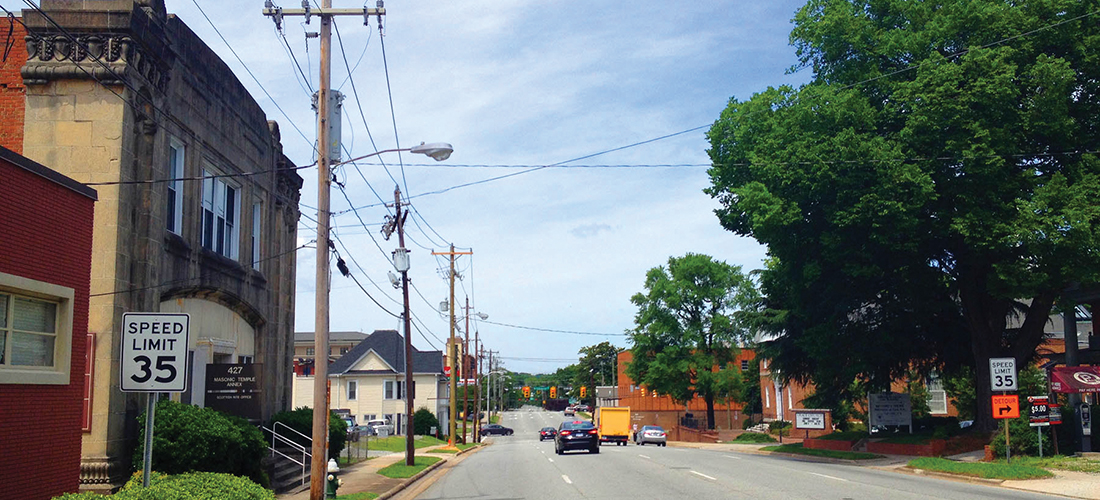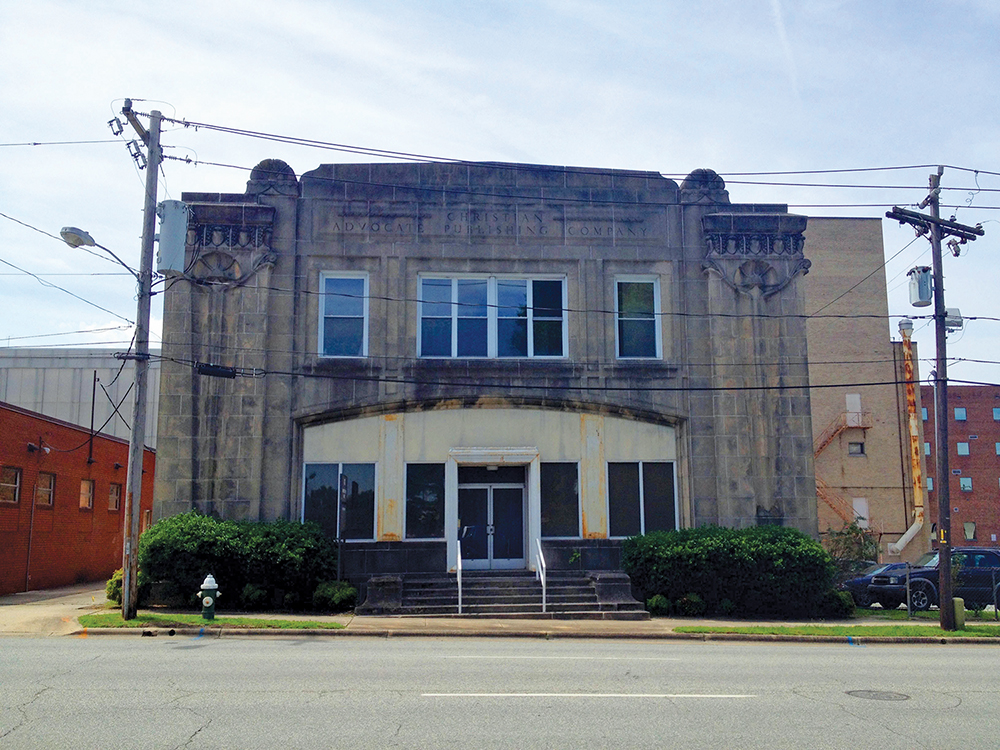
Save Our Historic Buildings
Local architectural beauties are threatened with the wrecking ball
By Billy Eye
 “We are made wise not by the recollection of our past, but by the responsibility for our future.” — George Bernard Shaw
“We are made wise not by the recollection of our past, but by the responsibility for our future.” — George Bernard Shaw
Was it really 40 years ago when, in an effort spearheaded by Betty Cone, the city acquired the Carolina Theatre, saving it from demolition? On the first weekend in 1975 that the city took possession Dee Covington and I cleaned each and every rocking seat in the place. Being a teenage volunteer, I was determined to explore the theater’s nether regions — heretofore off limits — like the “colored” balcony where the chairs were decidedly smaller and stiff. In the storage area we now know as The Crown, an overflowing pallet of paper 3-D glasses with transparent red and green plastic lenses left over from the 1950s waited in vain for that craze to reignite. But the most amazing discovery was hanging in the fly space above the stage floor.
The Carolina was built as a Vaudeville venue in 1927, the year Al Jolson’s The Jazz Singer ushered in the era of motion pictures with sound. Very soon after, the “Showplace of the Carolinas” was refitted as a movie palace. Meanwhile, one by one across the nation, repertory companies folded, leaving performers stranded in the last city they played. Apparently, one of the Keith Vaudeville chain’s touring acts had their last performance at the Carolina, because they abandoned several spectacular pastoral scenes on canvases spanning the length of the stage. Richly detailed, colorful oil paintings hanging in stasis, virtually unnoticed for a half-century — until I came across them as a teenager. In all the histories I’ve read about the theater, I’ve never seen mention of the stage sets. What happened to them is a mystery to me.
The Carolina was successfully resurrected in 1977 as a performing arts center; only a kook would argue that the parking lot intended in its stead would have served the city as handsomely, or profitably, over the last 40 years. So it’s vexing to me that two gorgeous, nearly century-old landmarks downtown are slated to be demolished for, yes, parking lots!
The Christian Advocate Publishing building at 429 West Friendly is the only example I know of locally with a quintessential Egyptian Revival motif, designed in the mid-1920s by Charles C. Hartmann whose myriad architectural wonders practically define our city. His achievements include the Jefferson Standard (now Lincoln Financial) building; the F.W. Woolworth Building, home of the International Civil Rights Center; the Price Mansion, Hillside, that’s made recent headlines; and Grimsley High School. Let’s consider how 429 West Friendly fits in with the other historical properties in that area.
In addition to butting up against the palatial Greensboro Masonic Temple, the Christian Advocate Publishing building sits within strolling distance of two impressive antebellum mansions, primo examples of downtown’s first homes repurposed for modern use. Directly across the street is the white columned wonder that is the Michael Sherwood House from around 1850 and, around the corner on North Edgeworth, the Weir-Jordan House, longtime home of the Greensboro Woman’s Club. Next door to that is a Craftsman-style bungalow built in 1910 when this neighborhood was originally developed. Grace Methodist United Church from the 1920s seamlessly connects this tableau. It’s only due to the vociferous objections of preservationists that the former headquarters for Christian Advocate Publishing wasn’t demolished back in May. However, if a contingency can’t be reached over the next few months, it will come down. If you want a parking lot, Greensboro, I say buy the nearby Hardee’s and tear that down. I doubt future generations will lament the loss of artery-clogging Thickburgers and faux Mexican food.
The madness doesn’t stop there. A venerable one-story building that wraps around the corner of East Market and Davie, featuring three decorative storefronts of brick, sandstone and green marble with glass brick accents, has a date with the bulldozer at year’s end. With roomy interiors, deep showcase entranceways and high ceilings, this scrappy survivor was once a cornerstone to one of the busiest intersections in town. Established in 1928, Showfety’s Uniforms had done a brisk business here until 1971, when it was displaced by the motel recently leveled for GPAC three blocks away.
Rather than getting stuck with the unsightly and soon-to-be-vacated News & Record complex that supplanted it, wouldn’t it have been nice if we hadn’t imploded the King Cotton Hotel in 1978, even if it were to sit empty for lo these many decades? Think of the possibilities. We’re fortunate South Elm wasn’t obliterated in the name of progress back in the early-1970s. Are we poised to make an egregious error in judgment like the one we narrowly avoided 40 years ago? Again, for parking lots? This demonstrates a staggering lack of imagination.
* * *
My favorite combo, Basement Life, took to the nonexistent stage at New York Pizza not long ago for a ferocious set. Bouyed by Caleb Gross’s hypersonic drumming and Eric Mann’s bass onslaught, lead singer Gavan Holden proved again to be an incredibly powerful singer songwriter with a raw but measured intensity, a defiant high energy authenticity that grows more belligerent with each new band incarnation. His poses aren’t poseur but true affronts to your fragile sense of self. (Music critique isn’t supposed to make sense, get over it.) Basement Life’s new CD, Love Is Not Real, is one you’ll listen to over and over again, until they inevitably drag you away in a straightjacket. OH
Billy Eye moved downtown 20 years ago when everyone asked, “Why would you want to live downtown? There’s nothing there.” Every Thursday afternoon this month from 3 p.m. until 6, Billy Eye will be at Parts Unknown: the Comic Book Store at 906 Spring Garden, near the corner of Mendenhall, to talk with you about Old Greensboro, classic comics, TV history, my books, or whatever else you can think of. Stop by and say hello!





